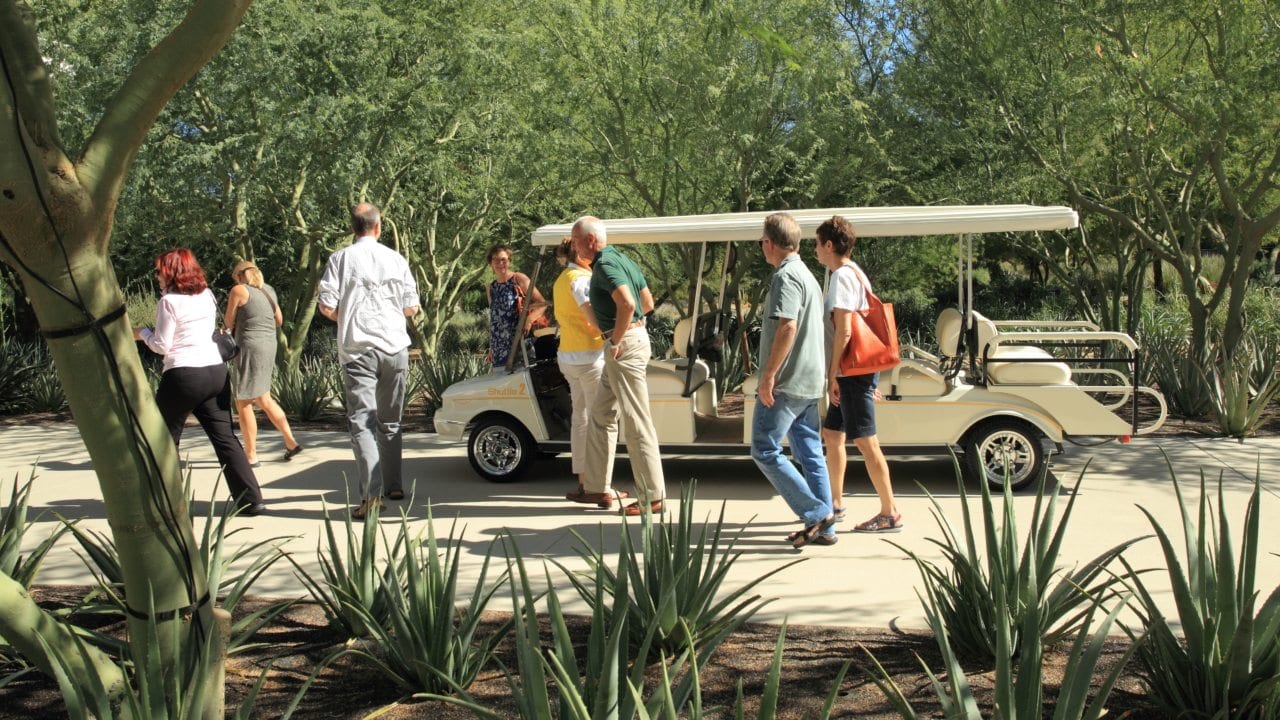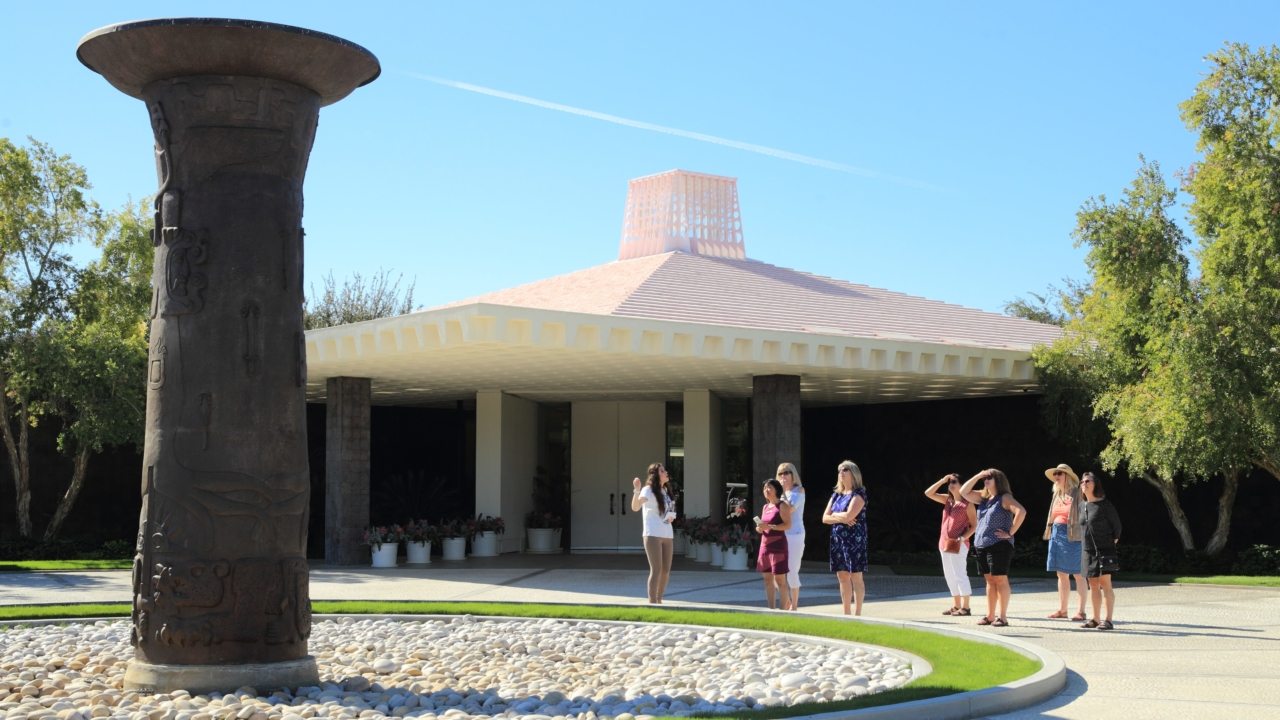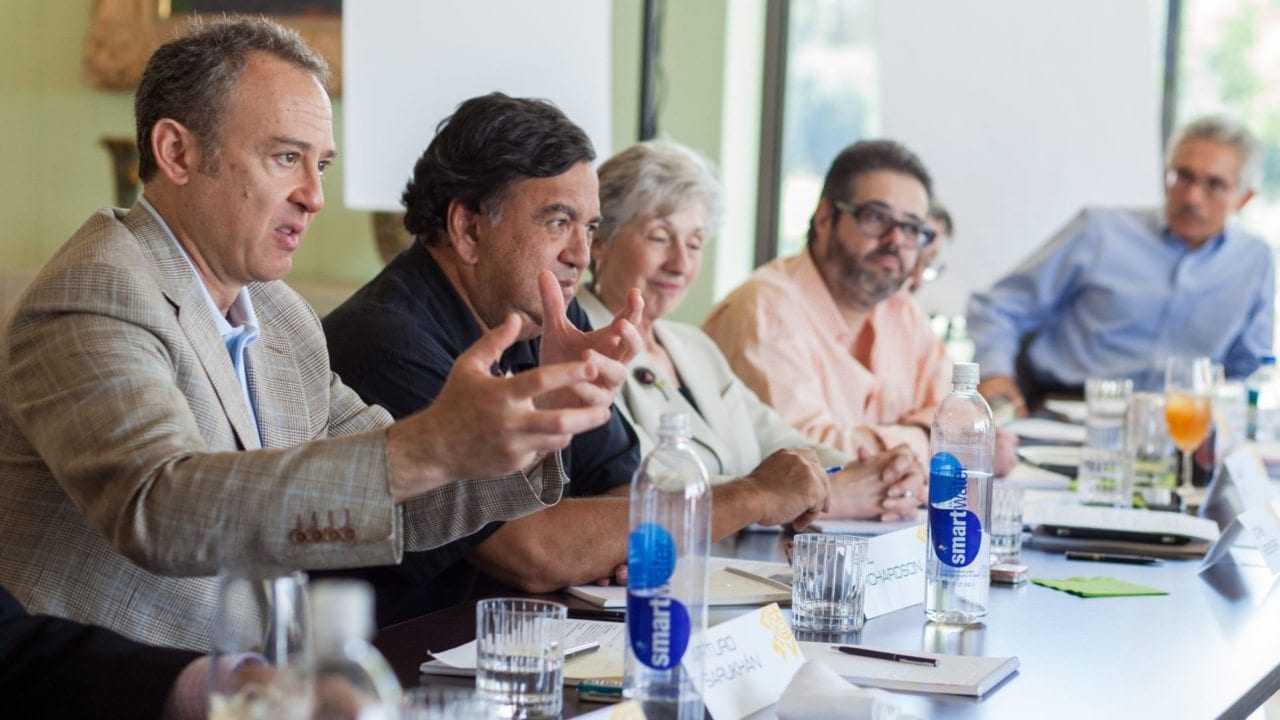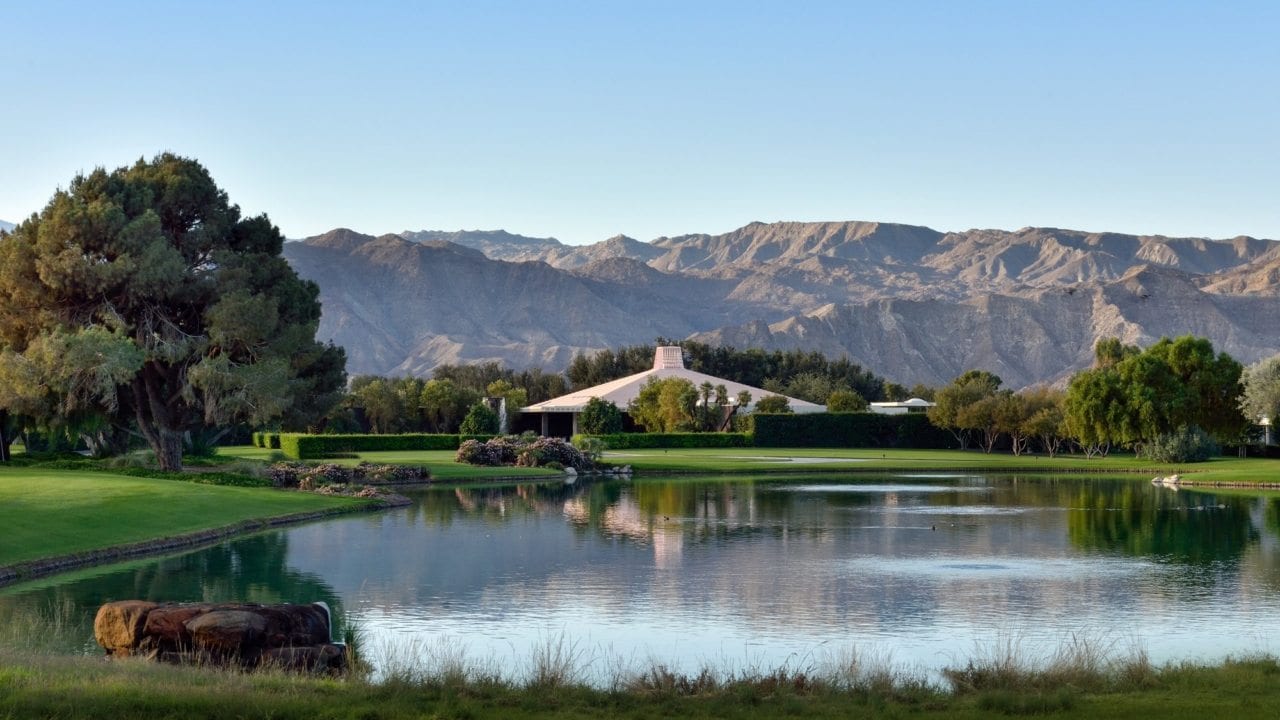Rancho Mirage, Calif. – This week the Brookings John L. Thornton China Center hosted the U.S.-China Leaders Forum at The Annenberg Retreat at Sunnylands. The Forum, held from May 8 to May 10, 2016, brought together high-level policymakers, business entrepreneurs, military strategists, policy scholars, scientists, and innovators to foster greater trust between the United States and China, as well as develop and promote ideas for increased collaboration between the two countries on issues of the day and subjects of long-term strategic interest.
The rise of China is at the forefront of global strategic change in the 21st century. Economic, geopolitical, technological, institutional, demographic, and environmental developments in the People’s Republic of China will be extraordinary in their scope and depth and will shape international politics and U.S.-China relations for decades to come.
The topics discussed during the Forum included economic and trade ties, China’s economic reform, regional and global security, technological innovation and climate change. The in-depth and timely discussions also focused on the potential trajectory of U.S.-China relations under the next American president.
As plans were being made to transform Walter and Leonore Annenberg’s private home into a retreat center and diplomatic venue, The Annenberg Foundation Trust at Sunnylands pursued a conversion strategy with a modern-day imperative: Reduce water and energy consumption.
The goal, established in 2009, set the stage for a series of infrastructure improvements at the Midcentury Modern estate in Rancho Mirage, Calif., and the subsequent use of Sunnylands as a living laboratory for experiments in environmental sustainability.
Now, that culture of environmental stewardship, coupled with a state mandate to conserve water during California’s extraordinary drought, has produced the largest water savings at Sunnylands to date.
From June 2015 through February 2016, water use dropped 33.7 percent compared to 2013 figures. Gov. Jerry Brown had asked Californians to reduce water consumption by 25 percent during that period. The water savings are even higher when compared to the historic use of water on the estate over a three-decade period ending in 2009 – a whopping 39.7 percent reduction.
“Far and away, this is the biggest measure we have taken to date,” said Director of Operations Pat Truchan, whose department manages the grounds at Sunnylands, including its legendary golf course.
Routinely, golf courses in the Coachella Valley seed their turf with ryegrass in fall and winter to maintain a lush green landscape. While sun-loving Bermuda grass goes dormant in the cold, ryegrass thrives. But the overseeding process requires a heavy watering schedule, in part because ryegrass seeds need to be kept wet to germinate.


Aerial views of the historic estate. Photo from 2012 is on the left, one from Jan 2016 is on the right.
“The Governor’s mandate (to conserve water) allowed us a little freedom to try some things,” Truchan said of the move to greatly expand an experiment, begun a year earlier, to scale back on overseeding to save water.
During the 2014-15 season, 44 acres of the estate, including the golf course fairways, were not overseeded. On the ground, the result was a landscape of contrasting of greens, browns and yellows. This season, the number of acres removed from the overseeding program has more than doubled to 96.
Instead of the wall-to-wall carpet of green turf that Sunnylands has sported in winters past, the turf now is almost uniformly a beautiful yellow gold. Golf course greens are painted green with a non-toxic turf paint.
Only 10 acres of land were overseeded this year, primarily lawns open to public tours that surround the Annenberg home and the half-acre Great Lawn at Sunnylands Center & Gardens. Those lawns were overseeded to preserve the home’s historic vistas and, in the case of the Great Lawn, to maintain the space where the public often is invited for free programs.
“We are constantly balancing the preservation ethic, our adaptive reuse requirements, and a commitment to sustainability,” said Janice Lyle, director of Sunnylands Center & Gardens.
Given how different strains of Bermuda grass on the 200-acre estate may react to cold weather, Truchan said there was a risk that the landscape would look uneven – mottled or blotchy – as turf fell into dormancy. Fortunately, that did not happen. “They all reacted the same. They kept cold enough. It is a beautiful golden color,” he said.
But the look is not permanent. The Bermuda grass will awaken and turn green as winter wanes and temperatures rise.
The experiment to curtail overseeding is consistent with the improvements Sunnylands had made to save water and energy even before the 50-year-old estate was opened to the public in 2012. Those improvements include installation of a state-of-the-art irrigation system, an advanced water-monitoring system and relining all the lakes on the property to prevent water loss and seepage. Sunnylands also replaced 60 acres of turf with mulch and drought-tolerant tall grass, largely around the perimeter of the estate.
Truchan said he is confident Sunnylands’ seasonal water savings will exceed the call Governor Brown made in 2015 for cities and towns across the state to cut water use by 25 percent through February.
He credited grounds Superintendent Drew Kerr for managing the process, saying Kerr experimented over the past several months with the irrigation program’s frequency, duration and water flow.
“It all goes back to that living laboratory idea,” Truchan said. “Drew was able to play with different scenarios to find what has the greatest impact on water savings while doing the best job of maintaining the aesthetics of the property.”
Since 2013, Sunnylands education & environmental programs staff, with the assistance of local experienced birders, has been monitoring and documenting resident and migratory bird species at the historic estate and Center & Gardens. Weekly guided bird trips record the species that remain on site to breed and nest or migrate through along their Pacific Flyway route.
Migrations of waterfowl, marsh, and shorebirds occur during spring and fall, providing the best time to see the most variety at the estate. However, smaller birds and birds of prey occur on the property year-round. These birds are attracted to Sunnylands’ freshwater lakes and streams, multiple habitats for nesting and roosting, and an abundant food supply.
In close proximity to the Colorado River, the Salton Sea, Picacho State Recreation Area, and other stopping points on the Pacific Flyway, Sunnylands is a natural site for the migrants to rest on their long-distance journey.
The variety of habitats on the historic estate and at the Center & Gardens appeals to a wide cross section of bird species. As of April 2024, more than 170 bird species have been sighted.
At the historic estate, hundreds of tree species allow nesting and roosting for birds as small as hummingbirds and as large as Red-tailed Hawks and Great-horned Owls. Low-water meadow grasses that replaced 60 acres of turf have become a favorite of ground nesters, while heron, egrets, and waterfowl crowd the lakes and streams during the peak migration.
Vermilion Flycatchers, show stoppers on bird tours, remain on the estate year-round to nest, providing an opportunity to see the brightly colored males, as well as the females and juveniles.
At the Center & Gardens, Costa’s Hummingbirds gather in numbers too high to count, performing territorial dives and battling for the best plots near blooming aloe, agave, and hesperaloe. Verdins nest in the Mesquite and Palo Verde trees, while roadrunners nest near the wildflower field. Bewick’s Wren and phoebe hunt throughout the open spaces.
Attached at the bottom of the page is our most recent bird list. This list will be updated as new species are identified on the property.
Free Guided Bird Walks are offered at the Center & Gardens on Thursday mornings, November through May, and require no reservation. See the Sunnylands Events Calendar for information and a complete schedule.
Birding tours of the estate are available in advance through online ticket sale.
Sources & links:
National Wildllife Federation
CA Department of Fish & Wildlife
Pacific Flyway Council
THE WHITE HOUSE
Office of the Press Secretary
For Immediate Release June 7, 2013
REMARKS BY PRESIDENT OBAMA
AND PRESIDENT XI JINPING OF THE PEOPLE’S REPUBLIC OF CHINA
BEFORE BILATERAL MEETING
The Annenberg Retreat at Sunnylands
Palm Springs, California
5:21 P.M. PDT
PRESIDENT OBAMA: Well, it gives me great pleasure to welcome President Xi back to the United States. We first met during my visit to China in 2009, and I had the opportunity to welcome him to the Oval Office last year when he was still Vice President and a guest of Vice President Biden’s.
I think some of you may know that President Xi is no stranger to the United States. He’s remembered fondly in Iowa, where he once visited and stayed with a local family, and on his trip last year, he had a chance to come to California — including, I understand, going to a Lakers game, which I was very jealous of. (Laughter.)
President Xi just took office in March. Our decision to meet so early, I think, signifies the importance of the U.S.-China relationship. It’s important not only for the prosperity of our two countries and the security of our two countries, but it’s also important for the Asia Pacific region and important for the world.
And the importance of this relationship in some ways is reflected with this somewhat unusual setting that we are hosting the President in. Our thought was that we would have the opportunity for a more extended and more informal conversation in which we were able to share both our visions for our respective countries and how we can forge a new model of cooperation between countries based on mutual interest and mutual respect. I think both of us agree that continuous and candid and constructive conversation and communication is critically important to shaping our relationship for years to come.
And for my part, this will give me an opportunity to reiterate how the United States welcomes the continuing peaceful rise of China as a world power and that, in fact, it is in the United States’ interest that China continues on the path of success, because we believe that a peaceful and stable and prosperous China is not only good for Chinese but also good for the world and for the United States.
Of course, as two of the largest economies in the world, we’re going to have a healthy economic competition, but we also have a whole range of challenges on which we have to cooperate, from a nuclear North Korea — or North Korea’s nuclear and missile programs — to proliferation, to issues like climate change.
And the United States seeks an international economy and international economic order where nations are playing by the same rules, where trade is free and fair, and where the United States and China work together to address issues like cybersecurity and the protection of intellectual property.
In addition to the strategic concerns that we share and the economic challenges that each of our countries face, I will continue to emphasize the importance of human rights. President Xi has spoken of a nation and a people that are committed to continuous self-improvement and progress, and history shows that upholding universal rights are ultimately a key to success and prosperity and justice for all nations.
So I want to again welcome President Xi to the United States. We’re very glad that he’s here. Inevitably, there are areas of tension between our two countries, but what I’ve learned over the last four years is both the Chinese people and the American people want a strong, cooperative relationship, and that I think there’s a strong recognition on the part of both President Xi and myself that it is very much in our interest to work together to meet the global challenges that we face. And I’m very much looking forward to this being a strong foundation for the kind of new model of cooperation that we can establish for years to come.
So welcome, and thank you very much for being here.
PRESIDENT XI: (As interpreted.) Honorable President Obama, it’s my great pleasure to meet you. We’re meeting with each other earlier than people might have expected. They thought that we might have to wait until the Saint Petersburg G20 summit to meet with each other, but here we are. I want to thank you for your invitation, and it’s my great pleasure to meet you here at Sunnylands, the Annenberg Estate.
This is a wonderful place, a place of sunshine, and it’s very close to the Pacific Ocean. And on the other side of the ocean is China. When I visited the United States last year, I stated that the vast Pacific Ocean has enough space for the two large countries of China and the United States. I still believe so.
And, Mr. President, we’re meeting here today to chart the future of China-U.S. relations and draw a blueprint for this relationship and continue our cooperation across the Pacific Ocean.
And this reminds us of what happened over 40 years ago when the leaders of China and the United States, with the strategists’ political courage and wisdom, realized a handshake across the Pacific Ocean and reopened the door of exchanges between China and the United States. And in the more than 40 years since then, the China-U.S. relationship has gone through winds and rains and it made historical progress. And our two peoples and the people elsewhere in the world have reaped huge benefits from this.
And at present, the China-U.S. relationship has reached a new historical starting point. Our two countries have vast convergence of shared interests, from promoting our respective economic growth at home to ensuring the stability of the global economy; from addressing international and regional hotspot issues to dealing with all kinds of global challenges. On all these issues, our two countries need to increase exchanges and cooperation.
And under the new environment, we need to take a close look at our bilateral relationship: What kind of China-U.S. relationship do we both want? What kind of cooperation can our two nations carry out for mutual benefit? And how can our two nations join together to promote peace and development in the world? These are things that not just the people in our two countries are watching closely, but the whole world is also watching very closely.
Both sides should proceed from the fundamental interests of our peoples and bear in mind human development and progress. We need to think creatively and act energetically so that working together we can build a new model of major country relationship.
President Obama, I look forward to having in-depth communication with you on major strategic issues of common interest to deepen our mutual understanding and to push forward all-round cooperation. I’m confident that our meeting will achieve positive outcomes and inject fresh momentum into the China-U.S. relationship.
Thank you.
PRESIDENT OBAMA: Thank you very much, everybody.
END 5:34 P.M. PDT



